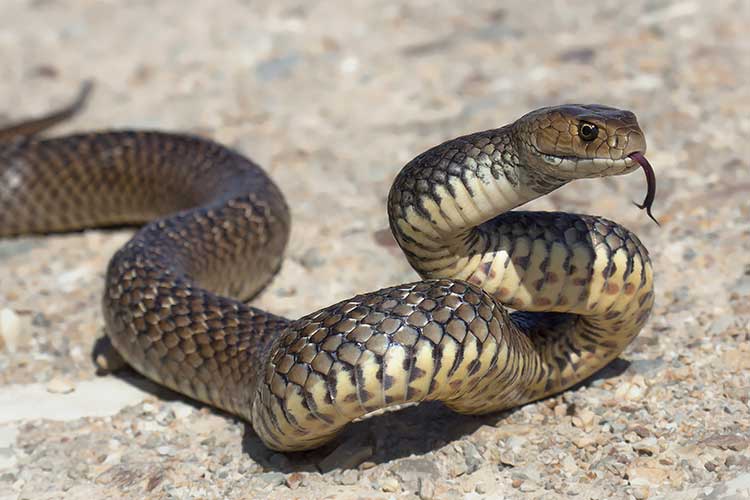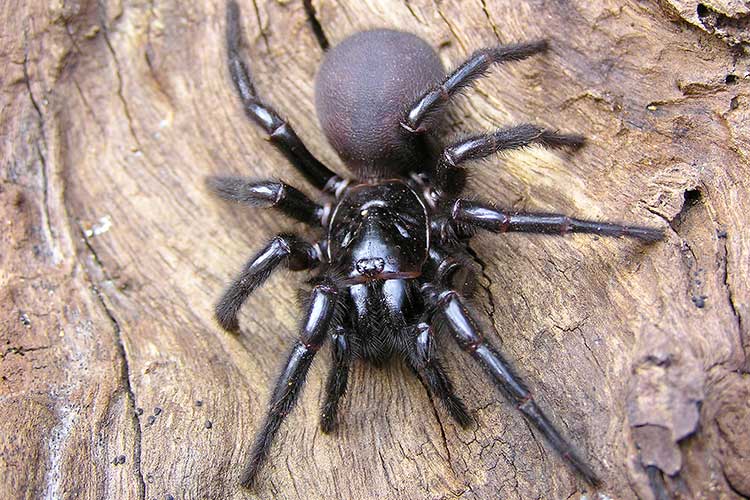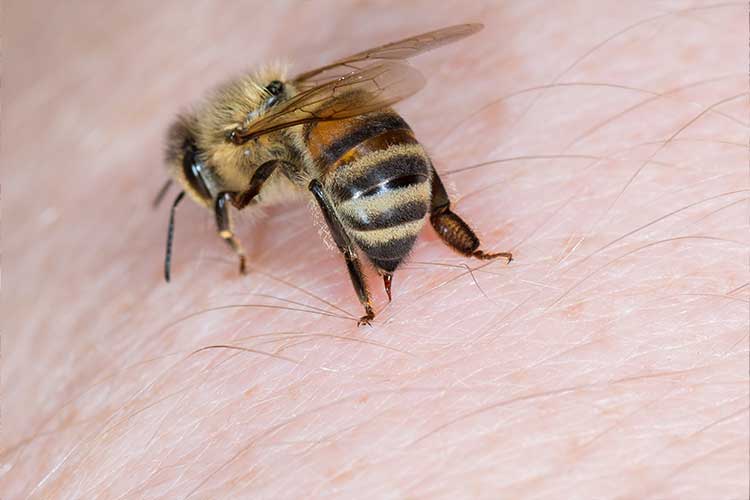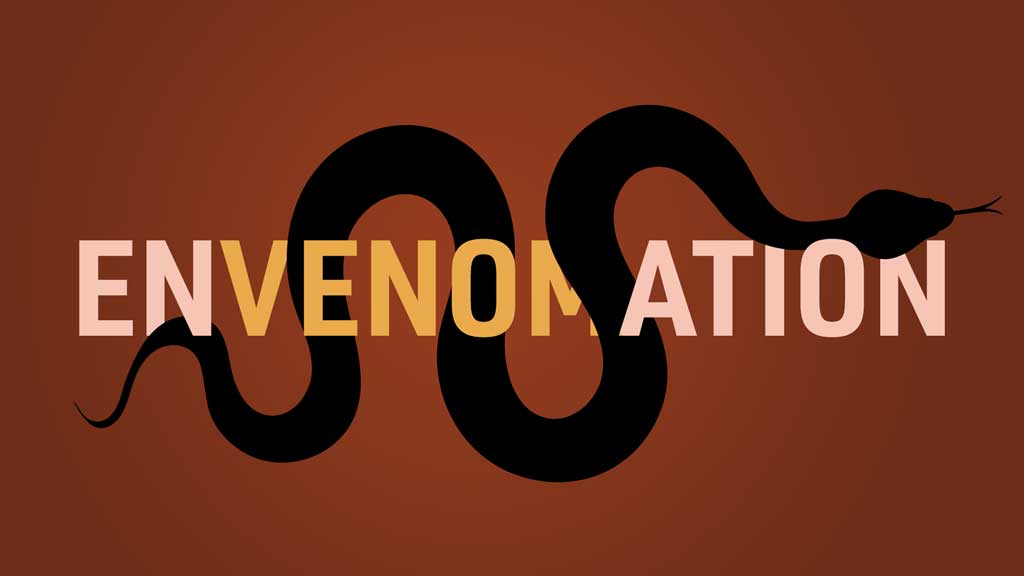Content warning: Please be aware that this article contains discussions and images of snakes, spiders, and insects.
Australia is home to an incredible variety of animals, insects, and marine life. However, many of these native creatures have the potential to cause harm, including through bites and stings.
While death due to envenomation is rare, with only 19 occurrences recorded between 2017 and 2018 (AIHW 2021), envenomation can cause serious illness and requires immediate treatment.
Note: The following article is based on the most recent ANZCOR Guidelines.
What is Envenomation?
Envenomation is the exposure to an animal’s toxic secretion (known as venom), generally via a bite or sting (AMBOSS 2024).
Envenomation may be localised or systemic (Children's Health Queensland 2022).
Poisonous v Venomous: What’s the Difference?
Poison and venom are similar terms that both describe harmful substances. However, they are not interchangeable.
- Poisons enter the body via ingestion, inhalation or absorption. Poisonous animals may excrete toxins passively rather than actively attacking.
- Venom is actively injected into the body via a bite or sting, where it enters through a wound. It has evolved to serve animals’ specific purposes, such as self-defence or incapacitating prey.
(Fry & Jackson 2017; Lewis 2024)
For more information on the first-aid management of poisoning, see the article: Acute Management of Poisoning.
Venomous Animals in Australia

There are a variety of venomous animals in Australia, posing varying degrees of risk to health. Some of these animals include:
- Snakes
- Spiders
- Ticks, bees, wasps and ants
- Jellyfish
- Blue-ringed octopuses and cone shells
- Certain types of fish.
Of the more than 3,500 hospitalisations attributed to bites and stings between 2017 and 2018, 26% were caused by bees, 19% by spiders, and 17% by snakes (AIHW 2021).
Each type of bite or sting requires a different approach to first-aid management.
Pressure Immobilisation Technique
The pressure immobilisation technique (PIT) is a bandaging technique used to slow venom from moving through the lymphatic system into the bloodstream (Better Health Channel 2022).
PIT involves firmly bandaging the puncture site to squash nearby lymph vessels, which traps the venom at the puncture site and prevents it from leaving (Better Health Channel 2022; ANZCOR 2011).
If bandages are unavailable, clothes, stockings or towels can be used instead (Better Health Channel 2022).
The ANZCOR guidelines recommend that PIT is used for:
- All venomous Australian snake bites (including sea snakes)
- Funnel-web spider bites
- Blue-ringed octopus stings
- Cone shell stings.
(ANZCOR 2011)
PIT is not to be used for any other bites and stings, including bites from spiders other than funnel-webs (ANZCOR 2011).
How to Perform the Pressure Immobilisation Technique
If the patient has been bitten or stung on a limb:
- PIT should be performed as soon as possible. However, resuscitation should always be the first priority.
- Apply a broad pressure bandage over the puncture site, ideally a 10-15 cm elasticised bandage if available.
- Ensure the bandage is firm and tight - you should be unable to easily slide a finger between the bandage and the skin.
- Apply another pressure bandage to immobilise the affected limb. The bandage should begin at the fingers or toes of the affected limb and extend upwards, covering as much of the limb as possible. This should be applied over existing clothing, if possible.
- Splint the limb and joints on either side of the puncture site to restrict limb movement.
- If the puncture site is on the arm or forearm, apply a sling.
- Keep the patient and affected limb completely still until further assistance arrives.
(ANZCOR 2011; NSW Poisons Information Centre 2015)
If the puncture site is not on a limb, apply firm, direct pressure on the site. However, do not restrict the patient’s breathing or chest movement and do not apply firm pressure to their neck or head (ANZCOR 2011).
Do Not Use Arterial Tourniquets
Arterial tourniquets should never be used for any bites or stings in Australia, as they cut off circulation and are dangerous (ANZCOR 2011).
Managing Snake Bites
There are several snakes capable of lethal bites in Australia. These include:
- Taipans
- Brown snakes
- Tiger snakes
- Death adders
- Black snakes
- Rough-scaled snakes
- Some sea snakes.
(ANZCOR 2021a)
Most snake bite-related fatalities are caused by early cardiovascular collapse, which can occur within 10 to 60 minutes of the envenomation. Other potential consequences of snake bites include haemorrhage, nerve paralysis, muscle damage and kidney failure (ANZCOR 2021a).
Recognising Snake Bites

It’s important to note that in some cases, bites are painless with no visible injury. If a bite mark is visible, it will usually appear as either paired fang marks, a single mark or a scratch mark (ANZCOR 2021a).
Symptoms to look out for include:
- Headache
- Localised redness and bruising (uncommon)
- Nausea and vomiting
- Abdominal pain
- Dizziness
- Blood oozing from the bite site or gums
- Blurred or double vision
- Drooping eyelids
- Difficulty breathing, speaking or swallowing
- Swollen, tender glands in the groin or armpit of the bitten limb
- Limb weakness or paralysis
- Respiratory weakness or arrest
- If bitten by a brown snake, initial collapse or confusion followed by a seemingly partial or complete recovery.
(ANZCOR 2021a; St John 2022a)
Treating Snake Bites
- Follow DRSABCD.
- Move the patient away from the snake.
- Call 000 for an ambulance.
- Reassure the patient, lie them down and keep them still. Ensure they are being continuously monitored.
- Apply the pressure immobilisation technique.
- If the patient is unresponsive and not breathing normally, begin cardiopulmonary resuscitation (CPR)
- Antivenom must only be administered under the supervision of an appropriately qualified healthcare professional, in a properly equipped facility.
(ANZCOR 2021a; St John 2022a; Healthdirect 2022)
DO NOT:
- Cut or incise the bite
- Suck the bite
- Wash the bite (as leftover venom can be used to identify the snake)
- Attempt to kill the snake.
(ANZCOR 2021a; St John 2022a)
If it is safe to do so, consider taking a photo of the snake so that it can be identified (ANZCOR 2021a).
Managing Spider Bites
Generally, the only species that poses an immediate threat to life is the funnel-web spider. A bite from a redback spider may be life-threatening for very young children or older adults but is usually not serious. All other spiders, including white-tailed spiders, are not of concern (ANZCOR 2021b; Healthdirect 2023).
Recognising Funnel-web Spider Bites

Funnel-web spider bites can become life-threatening in only 10 minutes, so immediate recognition and treatment is crucial. Signs include:
- Pain at the bite site, with little local reaction
- Tingling around the mouth
- Excessive sweating
- Excessive saliva secretion
- Abdominal pain
- Muscular twitching (fasciculation)
- Difficulty breathing
- Confusion, leading to loss of consciousness.
(ANZCOR 2021b)
Treating Funnel-web Spider Bites
- Follow DRSABCD.
- Move the patient away from the spider.
- Call 000 for an ambulance.
- Reassure the patient, lie them down and keep them still. Ensure they are being continuously monitored.
- Apply the pressure immobilisation technique.
- Antivenom must only be administered under the supervision of an appropriately qualified healthcare professional, in a properly equipped facility. Note: Before considering the administration of funnel-web antivenom, ensure you have obtained the following information.
(ANZCOR 2021b; St John 2022b)
Do not attempt to capture the spider. Take a photo for identification purposes only after managing the patient (ANZCOR 2021b).
Recognising Redback Spider Bites
Look out for:
- Intense localised pain at the bite site that increases and spreads
- Hot, red and swollen skin at the bite site
- Nausea, vomiting and abdominal pain
- Excessive sweating, especially near the bite site
- Swollen, tender glands in the groin or armpit of the bitten limb.
(ANZCOR 2021b)
Treating Redback Spider Bites
- Keep the patient under observation.
- Apply an ice or cold compress for pain relief for periods of up to 20 minutes.
- If the patient is a young child, the patient collapses or the pain is severe, transport the patient to an acute care facility (preferably via ambulance).
- Pain may be treated with antivenom in an acute care facility.
(ANZCOR 2021b; St John 2020b)
Treating All Other Spider Bites
Apply ice or a cold compress for pain relief and seek medical attention if further symptoms or infection develop (Healthdirect 2023).
Managing Tick Bites and Bee, Wasp and Ant Stings

In most cases, bites and stings from bees, wasps or ants are relatively harmless. Situations where these injuries might be more serious include:
- Where the patient has an anaphylactic reaction to the bite or sting, which can be life-threatening
- Where the patient sustains multiple stings around the face, which can cause severe swelling and impaired breathing
- Where the patient sustains multiple insect stings, which may cause severe pain and widespread skin reaction.
(ANZCOR 2021c)
Tick bites typically cause few or no symptoms but may result in local skin irritation or a mild allergic reaction. In some people, however, tick bites can cause anaphylaxis or a severe allergic reaction (ANZCOR 2021c).
Recognising Insect Stings and Bites
Minor symptoms generally include immediate and intense localised pain with redness and swelling. Signs of a more serious reaction include an allergic reaction, anaphylaxis, abdominal pain or vomiting (ANZCOR 2021c).
Treating Insect Stings and Bites
Read: Recognising and Treating Acute Anaphylaxis
- If the patient is unresponsive and not breathing normally, perform Basic Life Support.
- Move the patient to a safe place
- If the patient is experiencing anaphylaxis, perform anaphylaxis first aid
- For a bee sting:
- Remove the stinger as quickly as possible without compressing the venom sac
- For a tick bite:
- Use permethrin cream for larvae and nymphs
- Use an ether-containing spray for adult ticks
- If you are in a remote location or if freezing the tick is not possible:
- Consult with a healthcare professional if possible
- If there is a history of tick allergy, administer the patient’s adrenaline auto-injector
- If there is no history of tick allergy and you are in a remote location, use fine-tipped forceps to grasp the tick as close to the skin as possible and remove it without squeezing
- Apply a cold compress to reduce pain and swelling (unless the person has been bitten by a tick).
- Monitor the patient for signs of an allergic reaction
- Call 000 for an ambulance if:
- The patient has been stung multiple times on the face or tongue, or
- The patient has a history of anaphylaxis for the sting or tick bite.
(ANZCOR 2021c)
For information on managing envenomation from marine creatures (jellyfish, blue-ringed octopuses, cone shells and fish), see the ANZCOR Guidelines: First Aid for Bites, Stings and Poisoning or contact the Poisons Information Centre on 13 11 26.
Test Your Knowledge
Question 1 of 3
Which one of the following should be managed using the pressure immobilisation technique?
Topics
Further your knowledge

 Free
Free
References
- AMBOSS 2024, Envenomation, AMBOSS, viewed 18 September 2024, https://www.amboss.com/us/knowledge/envenomation/
- Australian Institute of Health and Welfare 2021, Venomous Bites and Stings 2017–18, Australian Government, viewed 18 September 2024, https://www.aihw.gov.au/reports/injury/venomous-bites-and-stings-2017-18/data
- Australian and New Zealand Committee on Resuscitation 2011, Guideline 9.4.8 - Envenomation - Pressure Immobilisation Technique, ANZCOR, viewed 18 September 2024, https://www.anzcor.org/home/first-aid-for-bites-stings-and-poisoning/guideline-9-4-8-envenomation-pressure-immobilisation-technique/
- Australian and New Zealand Committee on Resuscitation 2021a, Guideline 9.4.1 – First Aid Management of Australian Snake Bite, ANZCOR, viewed 18 September 2024, https://www.anzcor.org/home/first-aid-for-bites-stings-and-poisoning/guideline-9-4-1-first-aid-management-of-australian-snake-bite/
- Australian and New Zealand Committee on Resuscitation 2021b, Guideline 9.4.2 - First Aid Management of Spider Bite, ANZCOR, viewed 18 September 2024, https://www.anzcor.org/home/first-aid-for-bites-stings-and-poisoning/guideline-9-4-2-first-aid-management-of-spider-bite/
- Australian and New Zealand Committee on Resuscitation 2021c, Guideline 9.4.3 – Envenomation from Tick Bites and Bee, Wasp and Ant Stings ANZCOR, viewed 18 September 2024, https://www.anzcor.org/home/first-aid-for-bites-stings-and-poisoning/guideline-9-4-3-envenomation-from-tick-bites-and-bee-wasp-and-ant-stings/
- Better Health Channel 2022, Bites and Stings - First Aid, Victoria State Government, viewed 18 September 2024, https://www.betterhealth.vic.gov.au/health/healthyliving/bites-and-stings-first-aid
- Children's Health Queensland Hospital And Health Service 2022, Emergency Management of Snakebites in Children, Queensland Government, viewed 18 September 2024, https://www.childrens.health.qld.gov.au/__data/assets/pdf_file/0025/180196/gdl-00725.pdf
- Fry, B & Jackson, T 2017, Poison vs. Venom, Australian Academy of Science, viewed 18 September 2024, https://www.science.org.au/curious/people-medicine/poison-vs-venom
- Healthdirect 2022, Snake Bites, Australian Government, viewed 18 September 2024, https://www.healthdirect.gov.au/snake-bites
- Healthdirect 2023, Spider Bites, Australian Government, viewed 18 September 2024, https://www.healthdirect.gov.au/spider-bites
- Lewis, R 2024, ‘Venom’, Encyclopedia Britannica, 4 September, viewed 18 September 2024, https://www.britannica.com/science/venom
- NSW Poisons Information Centre 2015, Pressure Immobilisation, New South Wales Government, viewed 18 September 2024, https://www.poisonsinfo.nsw.gov.au/First-Aid/Pressure-Immobilisation.aspx
- St John Ambulance Australia 2022a, First Aid Fact Sheet: Snake Bite, St John Ambulance Australia, viewed 18 September 2024, https://stjohn.org.au/assets/uploads/fact%20sheets/english/Fact%20sheets_snake%20bite.pdf
- St John Ambulance Australia 2022b, First Aid Fact Sheet: Spider Bites, St John Ambulance Australia, viewed 18 September 2024, https://stjohn.org.au/assets/uploads/fact%20sheets/english/Fact%20sheets_spider%20bites.pdf

